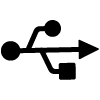Sensway 모니터링 시스템
에너지 미터 + 온라인 사용자 인터페이스
에너지 효율을 중시하는 가정을 위한 필수 솔루션, 센스웨이 모니터링 시스템.
센스웨이 미터를 통해 가정이나 아파트의 에너지 성능을 실시간으로 확인하고, 불필요한 에너지 소비를 줄여 한국전력공사 전기 요금을 절약할 수 있습니다.
또한, 예기치 않은 장비 고장을 감지하여 재생에너지 투자 자산을 보호하며, 전체 에너지 사용량과 태양광 발전량을 정확히 측정합니다.
전기요금 절약, 에너지 최적화, 자산 보호까지 한 번에 실현하세요.

태양광 PV 측정.
모든 센스웨이 시스템에 기본 제공되는 태양광 PV 모니터링으로 더 스마트한 에너지를 관리하세요.
- 실시간 시스템 성능 추적
: 태양광 패널과 인버터 상태를 실시간으로 확인하여 문제를 예방하고 보호하세요. - 자동 알림 기능
: 시스템 상태를 이메일 또는 문자로 즉시 받아보세요. - 월간 생산량 확인
: 태양광 발전량(kWh)을 월 단위로 간편하게 확인하고 분석하세요. - ROI 추적
: 투자 대비 수익(Return on Investment)을 손쉽게 관리하세요.
센스웨이와 함께 태양광 에너지 효율을 극대화하세요!

에너지 효율성 향상.
LED 조명 설치나 고효율 미니 스플릿 시스템 추가를 고려 중이신가요? 센스웨이 시스템으로 업그레이드 효과를 정확히 추적하여 절약된 킬로와트를 확인하고, 에너지 비용 절감과 환경 보호의 실질적인 성과를 확인하세요.
- 특정 투자 추적
: 에너지 효율화 프로젝트의 효과를 세부적으로 분석하고 관리하세요. - 지속적인 성공 보장
: 에너지 절감 효과를 확인하며 개선이 올바른 방향으로 진행 중임을 확신하세요. - 미래 개선 계획
: 데이터를 기반으로 더 나은 에너지 관리와 추가 효율성을 위한 전략을 세우세요.
센스웨이와 함께 에너지 비용을 줄이고 지속 가능성을 높이세요!

돈을 절약하세요.
작은 전력 소비자도 모이면 큰 비용을 만듭니다. 조명, 시계, 충전기 등 눈에 띄지 않는 소모 전력부터, 수영장 펌프와 같은 대형 장비까지, 방치하면 불필요한 에너지 비용이 발생합니다. 센스웨이와 함께 전자 기기로 인한 불필요한 비용을 방지하고, 스마트한 에너지 관리를 통해 일년 내내 비용을 절약하세요.
- 중요 부하 모니터링
: 섬프 펌프 등 주요 장비의 전력 소비를 실시간으로 추적. - 팬텀 로드 식별
: 사용하지 않는 기기의 숨은 전력 소모도 감지. - 에너지 예산 시작
: 데이터 기반 관리로 효율적인 에너지 소비 계획 수립.
센스웨이로 가정의 에너지 소비를 최적화하고 절약을 실현하세요!
Sensway 사용자 인터페이스
센스웨이의 사용자 인터페이스는 실시간 에너지 데이터와 재생 가능 에너지 시스템의 생산 현황을 한눈에 보여줍니다.
예시에서는 약 2일간의 초당 측정 데이터를 확인할 수 있습니다.
센스웨이의 직관적인 UI로 에너지 사용 패턴을 쉽게 이해하고, 효율적인 관리로 절약을 실현하세요!
녹색: 태양광 발전량. | 빨간색: 가정의 회로에서 사용되는 전력량.

그래프 왼쪽은 과거 데이터를, 오른쪽은 실시간 업데이트 전력량(와트 또는 킬로와트)을 게이지로 표시합니다.
실시간 데이터
: 초당 업데이트로 현재 에너지 흐름을 확인.
종합적인 디스플레이
: 에너지 소비와 생산을 직관적으로 시각화.
과거 데이터 보고서
: 과거 데이터를 통해 에너지 사용 추세를 분석.
스프레드시트 내보내기
: 데이터를 내보내어 심층 분석 및 공유 가능.
Sensway 네트워크 연결 옵션
센스웨이는 다양한 네트워크 연결 옵션을 제공하여 효율적이고 안정적인 데이터 관리가 가능합니다.
센스웨이의 유연한 연결 옵션으로 안정적이고 효율적인 에너지 관리 환경을 구축하세요!

이더넷 직접 연결.
- 네트워크 소스에 직접 연결하여 가장 안정적이고 빠른 데이터 신호를 제공합니다.
- 신뢰할 수 있는 통신 환경이 필요한 경우 적합합니다.

와이파이 연결.
- SENSWAY Core와 Pro Wi-Fi 미터는 2.4GHz 무선 네트워킹이 내장되어 있어 설치가 간편합니다.
- 전선 설치나 네트워크 액세스 포인트 설정 없이도 네트워크에 쉽게 연결할 수 있어 편리합니다.

직렬 데이터 통신.
- 모든 SENSWAY Core 및 Pro 미터에는 USB485 컨버터를 통해 직렬 데이터를 지원하는 2개의 USB 포트가 있습니다.
- Modbus RTU 및 BACnet MS/TP 프로토콜을 통해 데이터를 내보낼 수 있어 다양한 산업 표준을 지원합니다.
- 사용 가능한 프로토콜에 대한 자세한 정보를 확인하여 맞춤형 설정이 가능합니다.



